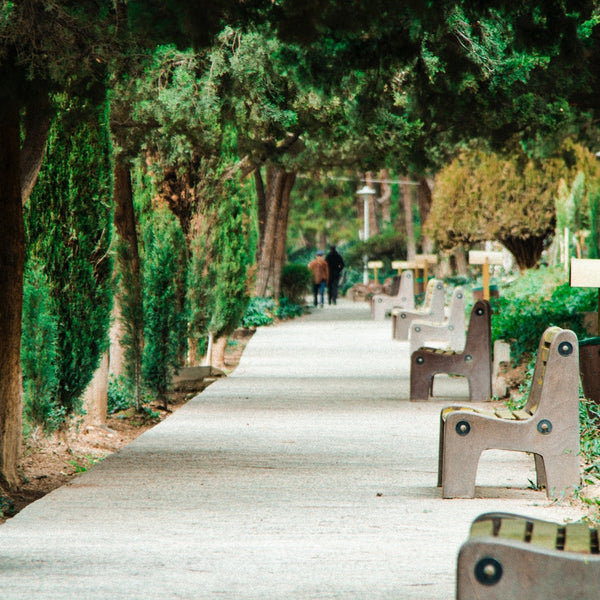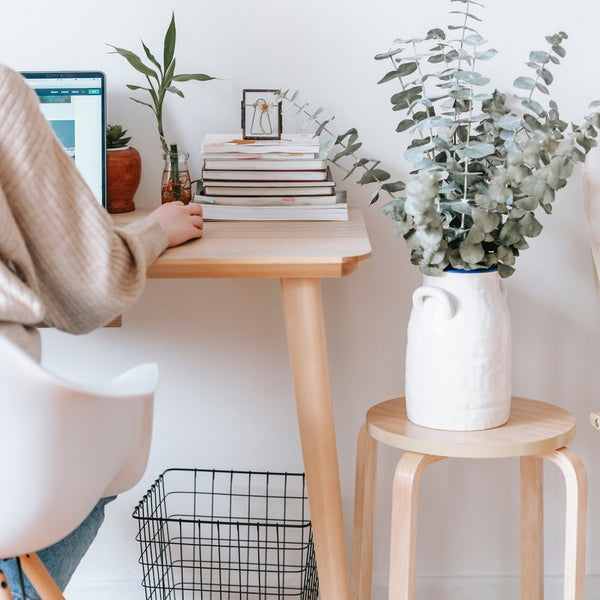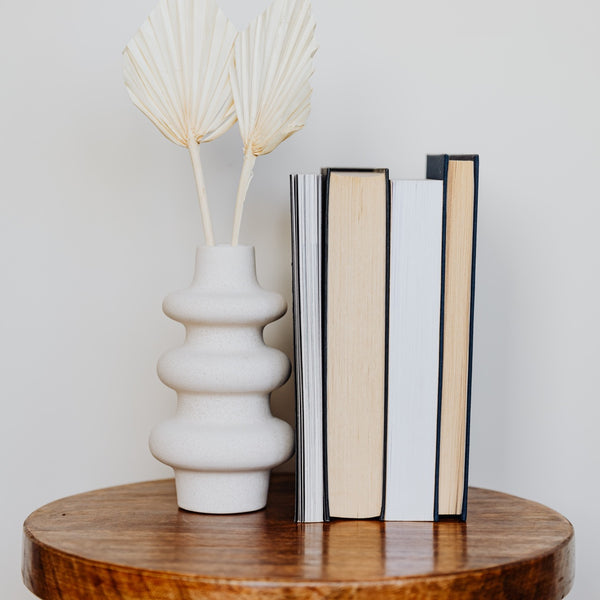Deep Dive Into the Depths of Your Imagination

“To bring anything into your life, imagine that it's already there.” - Richard Bach

With social isolation comes expansive amounts of time. The question is: What would you like to do with this gift of time? Imagine a year from now, you’re out with friends, enjoying a sunny spring day… and you look back on these moments of enforced solitude, what would you hope to show for it? Paintings. Sculptures. Poems. Plays. Songs. Perhaps a novel...
There is a massive fork in the road. Mindfulness is here. Right now, a blank page/canvas lays before you. Here’s a chance to nurture your abilities. Creativity lies within each of us. Some choose to cultivate its fruits, while others leave its seeds in hibernation. The days ahead are ripe for discovery.
Imagination is the lifeblood of creativity, fueling art, film, theater, literature. But its handiwork isn't exclusive to artistic realms; its handiwork is also at play every time you anticipate an outcome or desire and it manifests; when you add colors to characters as you read a book, or guess the ending of a movie. What is the placebo response, but your imagination, healing the body with the mind. The downside is, those same mystical wheels can also spin infinitesimal yarns, causing you to worrying and weave negative scenarios. For a moment, suppose you could gain greater insight into your unconscious mind. What if you could navigate the terrain of your deepest thoughts?

Groundbreaking Psychiatrist, Carl Jung, founder of analytical psychology, developed a therapy to interpret dreams, called “Active Imagination,” which melds the conscious with the subconscious, in order to gain deeper personal insight; art, dance, and other creativity based therapies are said to be rooted in this concept. How does it work? The method involves using elements born in the unconscious and integrating them into waking life; as the subject meshes the conscious with the unconscious, aspects of the self, which normally go unseen are brought to light.
If you'd like to try active imagination, here's an excellent video, of Dr Murray Stein, detailing the various steps. See additional instructions below. * Be sure to keep a pen and paper handy.
Step 1) Bring yourself into an ultra relaxed state. You can do this various ways: meditation, dance, art, walking in nature, or any other alternative that feels right. Once you’ve brought your mind into complete calm, allow images to surface without judgement. Dr. Murray explains the importance of not purposely fabricating imagery; or else you may find yourself weaving elaborate fantasies, which will distract and muddle your clarity. So don't consciously create, judge, or edit. Dr Stein says, “Rule number one is, whatever comes, receive it.”
Step 2) Allow your mind to ebb and flow; you may observe that images sometimes change as you hone in on them. Dr. Murray says, “Rule number 2 is, if it moves, follow it.” So when a visual takes on a life of its own, meaning that it speaks, shifts, evolves, goes someplace, Dr. Murray says “that's where it's alive and that's where you need to go. That's the place to engage. Because that's where the psyche is beginning to show itself,” In the video, Dr. Murray, advises doing the exercise for 20-30 minutes, each day.
Step 3) Afterward, it's essential to write down everything that happens in great detail. Do this as a daily practice, with discipline. Break down and interpret what you think these images mean. Jot down all your ideas. As if you are your own therapist, decide how you are affected by these projections. This process naturally links the conscious and the unconscious, as well as the right and left hemispheres of the brain.
For more ways to expand your imagination, read on...
Temporary Art

The purpose is simply to create and explore. Good, bad, or ugly does not exist here. Results will be tossed out afterward. Set the mood… Put on calming music. Choose pencils, markers, or crayons. If you can incorporate color, even better. When you have your materials, approach the page with a beginner's mind. Let yourself explore with childlike wonder. Draw a model, still life, or fantasy. And for the purposes of strengthening your ability to visualize, recreate all images from memory. Then put your own unique spin on it. Explore each shape. Vary the thickness of lines. If you've created the same shapes for a while, move on to a different one. There is no way to do this wrong. And once you've completed your drawing, freely examine it. Then crumple it up in a ball… take a deep yogic breath and throw it away. Unless, you just can't bear to part with it, in which case, you’re free to make an exception and keep your newfound treasure.
Daydream With Purpose

Come into a comfortable position, relax your shoulders, neck, spine. Take a deep inhale and slowly release. Think of something you would like to experience but haven't had the chance to yet. It could be a trip to an exotic place, an adventure, a relationship, or the creation/completion of a meaningful project. Without forcing anything, envisage what it would be like to experience the outcome you desire; see all the steps along the journey as if it were streaming a film within your mind's eye, allow the internal movie to grow full and rich. In addition to strengthening your imagination, you'll also contribute to your ability to manifest; since in order to realize something, it first needs to live and breath in your imagination.
Imagination Collage

In the Victorian era, the art of collage was a common hobby among women; creations ranged from simplistic cut and pasted photos to spectacular watercolors, pen and ink, and mixed media works. View some of these beauties on,“Playing With Pictures: the Art of Victorian Photocollage” a slideshow, courtesy of the MET archives. When crafting your own collage, take time choosing images. Be in the moment of each phase. Consciously choose to awaken your creative energy. Seek out materials that inspire you, vintage photographs, pages from a magazine, book, pamphlet... Don't intellectualize why you like or dislike an image. Allow yourself to be guided by instinct.
What you'll need: paper images. A surface to transfer them onto, such as a flat piece of wood, poster board, canvas, or furniture (tabletops and backs of chairs work too). Paintbrush. Decoupage glue, such as Mod Podge. Rolling pin. For additional artwork: paints (watercolor or acrylic) or pen and ink.
Before you secure the images in place, feel them on your fingers. And play around with various ways of arranging them. Don’t decide right away. Once you eventually choose your style, secure images in place with a bit of glue, then glaze over, and flatten with a rolling pin. Additionally, once your project has dried you can add three-dimensional items, or paint over the pictures. This can also be done, by painting or drawing first, and gluing photos on top, as many of the works in the MET exhibit.
Intuitive Journaling

Do this upon waking or before the start of a new project. Use a pen and paper and not a device; this allows the experience to be more tactile, without temping you to break attention by going online. Start with, “I feel…” Write down whatever shows up. Go with the natural flow. Resist the urge to look back and read even one word. Simply move forward. You might also ask, “What would I like to explore? Where do I wish I could go?” Write without thinking too much. Then, when you feel done, close with, “I am thankful for....”
One of your greatest gifts is your imagination. Whether you lead a creative life or not, there is always more that can be tapped into. Each step along the way, allows for newness and discovery. It may seem easier to stay within the confines of the familiar. Ultimately, to dig deeper or not, that’s your choice. Although, it would be a shame to waste that beautiful wellspring of potential that lies just below the surface, aching to emerge.



